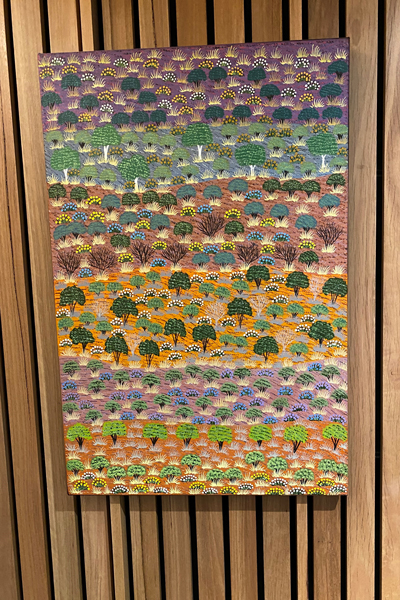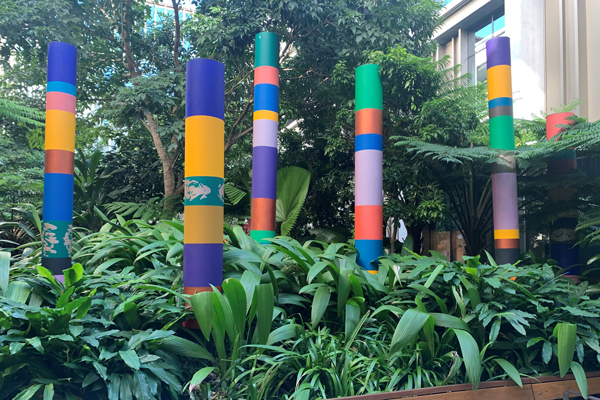Art and healing

My Country, by Ampitlatwatja artist, Michelle Pula Holmes is one of the many artworks by Aboriginal and Torres Strait Islander artists in the collection
There has long been an interest in the healing effects of the visual arts. In Florence Nightingale’s Notes on Nursing, published in 1859, she explains how beautiful objects can have a physical effect on sickness, “Variety of form and brilliancy of colour in the object presented to patients are an actual means of recovery”.
Traditionally a hospital’s appearance was one of order and sterility. Such features, however, can also result in hospital spaces feeling uninviting or bleak for patients, their families, and staff. Visual art provides an easy way to warm a hospital environment, making it feel more comfortable and welcoming.
There are numerous studies that show a variety of positive effects of including visual art in a hospital environment including:
- • Shorter length of stay in hospital
- • Increased pain tolerance
- • Decreased anxiety and depression
- • Distraction from worries/concerns
The STARS art collection was curated by Lynne Seear, Art Consultant and Manager of the Arts in Health Program for Children’s Health Queensland, on behalf of Australian Unity. Lynne acknowledges the importance role that art can provide in a hospital environment.
“From waiting areas to wards, hospitals impact the way we think and feel, and thoughts and emotions have physiological consequences. Art can help transform austere clinical environments into compassionate care spaces filled with interest and inspiration. This is the motivation behind the collection at STARS,” said Lynne.
A significant feature of the STARS art collection is its diversity. For example, the collection includes acquisitions from Art from the Margins, an advocacy organisation for artists living with adversity, mental health issues, physical or intellectual disabilities, or experiencing homelessness and social isolation.
Additionally, the collection has a large proportion of Aboriginal and Torres Strait Islander artists, with over 60% of the collection being represented by these artists. The artwork is sourced from both urban Indigenous artists and those who live and work in remote communities.
Central to the collection are the artworks by Tamika Grant-Iramu which greet people as they arrive at the entry to STARS. Tamika’s Torres Strait Islander heritage informs the design of the vinyl decals on the outside of the building and the entry foyer’s inlaid floor rugs and brass screen. Together, the pieces provide a rich and vibrant welcome to the hospital and signal to Aboriginal and Torres Strait Islander people that STARS is a culturally safe space.
Several of the pieces in the collection were also created during the COVID-19 pandemic.
“Acquiring art that was directly related in subject matter to this point in time became part of the curatorial strategy. Accordingly, the collection now includes artworks completed during lockdown, when the world narrowed down to the view through a studio window or a walk around the neighbourhood,” said Lynne.
The art collection can be found on all seven floors of the hospital, including the outside courtyard on level 4 and the artwork in the gardens on level 3.

The STARS’ artwork collection includes Ian Waldron’s Bloodwood Totems which are a striking feature in one of the hospital’s courtyard
